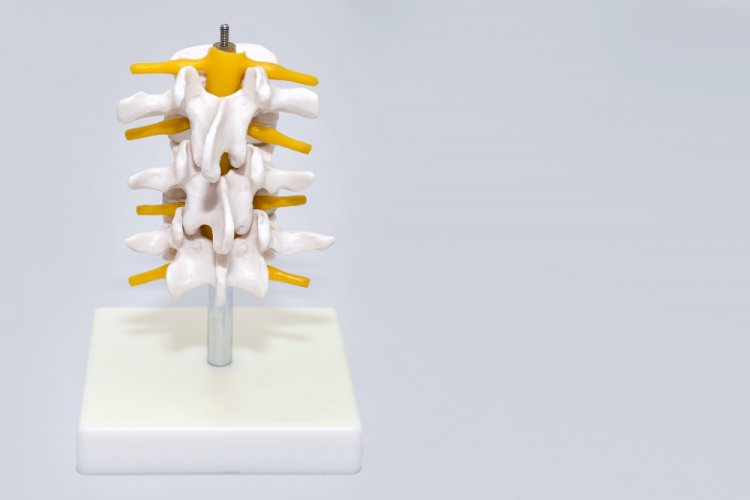Unraveling the Mystery of Spinal Muscular Atrophy: Causes, Symptoms, and Treatments
Spinal Muscular Atrophy (SMA) is a rare genetic disorder affecting the motor neurons in the spinal cord, leading to progressive muscle weakness and atrophy. This condition can significantly impact an individual's quality of life and requires comprehensive management strategies. In this article, we delve into the causes, symptoms, and treatment options available for SMA.

Causes of SMA
SMA is primarily caused by a mutation in the survival motor neuron 1 (SMN1) gene, which is responsible for producing a protein essential for the maintenance and function of motor neurons. This genetic mutation results in a deficiency of the SMN protein, leading to the degeneration of motor neurons and subsequent muscle weakness. SMA follows an autosomal recessive inheritance pattern, meaning that both parents must carry a defective copy of the SMN1 gene to pass the condition on to their child.
Types of SMA
There are several types of SMA, categorized based on age of onset and severity of symptoms:
- Type 1 SMA (Werdnig-Hoffmann disease): This is the most severe form, usually manifesting in infancy. Infants with type 1 SMA typically exhibit profound muscle weakness, respiratory difficulties, and developmental delays.
- Type 2 SMA: Symptoms of type 2 SMA usually appear in infancy or early childhood. Children with this type may achieve some motor milestones but experience progressive muscle weakness over time.
- Type 3 SMA (Kugelberg-Welander disease): This form of SMA typically presents later in childhood or adolescence. Individuals with type 3 SMA may have milder symptoms and a slower progression of muscle weakness compared to other types.
- Type 4 SMA: This is the rarest form of SMA, with symptoms typically appearing in adulthood. The progression of muscle weakness in type 4 SMA is generally slow and may not significantly impact lifespan.
Symptoms of SMA
The symptoms of SMA vary depending on the type and severity of the condition. Common signs and symptoms include:
- Muscle weakness, especially in the limbs and trunk
- Difficulty with motor skills such as sitting, crawling, or walking
- Respiratory difficulties, including shallow breathing and frequent respiratory infections
- Delayed motor milestones (e.g., sitting up, walking)
- Tremors or involuntary muscle twitching
- Scoliosis (curvature of the spine) in some cases
- Swallowing difficulties and poor weight gain in infants
Diagnosis of SMA
Diagnosing SMA typically involves a combination of clinical evaluation, genetic testing, and electromyography (EMG) to assess muscle function and nerve conduction. Genetic testing can confirm the presence of mutations in the SMN1 gene, while EMG can detect abnormal patterns of electrical activity in affected muscles.
Treatment of SMA
While there is currently no cure for SMA, several treatment options aim to manage symptoms, slow disease progression, and improve quality of life:
- Gene Therapy: Recently approved gene therapies such as onasemnogene abeparvovec-xioi (Zolgensma) and risdiplam (Evrysdi) have shown promising results in increasing SMN protein levels and improving motor function in individuals with SMA.
- Medications: Nusinersen (Spinraza) is an FDA-approved medication administered via spinal injection that can increase SMN protein production and improve motor function in individuals with SMA.
- Physical Therapy: Physical therapy is essential for maintaining muscle strength, mobility, and range of motion. Adaptive equipment and assistive devices may also be recommended to enhance independence and facilitate activities of daily living.
- Respiratory Support: Individuals with SMA may require respiratory support, such as mechanical ventilation or cough assistance devices, to manage respiratory complications and improve breathing.
- Nutritional Support: Adequate nutrition is crucial for individuals with SMA to support growth and development. In some cases, nutritional supplements or feeding tubes may be necessary to ensure adequate caloric intake.
In conclusion, Spinal Muscular Atrophy (SMA) is a complex genetic disorder characterized by progressive muscle weakness and atrophy due to the degeneration of motor neurons in the spinal cord. While SMA presents significant challenges, advancements in medical research and therapeutic interventions offer hope for improved outcomes and quality of life for individuals affected by this condition. Early diagnosis, comprehensive care, and ongoing support are essential components of managing SMA and maximizing the potential for individuals to lead fulfilling lives despite the challenges posed by the disease.
#SpinalMuscularAtrophy #SMAAwareness #MuscleWeakness #NeurologicalDisorder #GeneticDisorder #RareDisease #MedicalResearch #GeneTherapy #PhysicalTherapy #RespiratorySupport #NutritionalSupport #Healthcare #Neurology #MedicalScience #SMAFighter #QualityOfLife #PatientCare #MedicalInnovation #HealthAwareness #RareDiseaseAwareness #SupportSystems #ClinicalResearch #Medication #TherapeuticInterventions #MuscleAtrophy #Neuroscience #PatientSupport #SMAWarrior #HealthAndWellness #EmpowerPatients #MedicalAdvancements #AwarenessCampaign #HealthEducation
Disclaimer:
The information provided in this article is for educational purposes only and should not be considered medical advice. If you have any health concerns or are experiencing symptoms, it is important to consult with a healthcare professional, such as a doctor or clinic, for proper diagnosis and treatment. Always seek the advice of your doctor or other qualified health provider with any questions you may have regarding a medical condition. Do not disregard professional medical advice or delay in seeking it because of something you have read in this article.
What's Your Reaction?





















